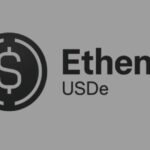A statement was delivered by Armstrong near the conclusion of the recent Coinbase earnings conference, an action intended to finalize nearly $90,000 in outstanding prediction market wagers. This event was interpreted by some as a benign jest, while it was deemed by others to constitute market manipulation originating from the leader of a regulated exchange.
The third-quarter financial results conference for Coinbase was concluded by Brian Armstrong on October $30 with a precise statement. This single phrase instantly settled ongoing prediction market contracts that had been established on platforms such as Polymarket and Kalshi.
The incident swiftly ignited discussions regarding whether the sector’s most prominent chief executive had merely ridiculed a specialized wagering platform or if a boundary had been breached that fully regulated financial leaders should not approach.
“I was a little distracted because I was tracking the prediction market about what Coinbase will say on their next earnings call. And I just want to add here the words Bitcoin, Ethereum, blockchain, staking, and Web3 to make sure we get those in before the end of the call.”
Armstrong said in the final seconds of the call:
The statement was informal, almost insignificant, yet it instantaneously shifted approximately $90,000 worth of outstanding predictions across the Kalshi and Polymarket platforms from an ambiguous state to a final settlement in the time it was required for him to complete his utterance.
The subsequent response was divided along anticipated ideological boundaries. The creators of forecasting markets and native digital asset traders merely dismissed the incident as a benign, harmless practical joke.
Conversely, a second financial operator perceived an entirely different occurrence: the head of a publicly listed, regulated finance corporation brazenly influencing a trading venue, even one of a minor size. This act was seen as supplying ample justification to every doubter who argues that the entire sector is too undeveloped for serious institutional capital.
How the Markets Were Positioned
A distinct event agreement, named “What will Coinbase say during their next earnings call?,” was listed by Kalshi, which operates as a CFTC-regulated designated contract market. This instrument featured binary, definitive outcomes contingent upon the inclusion of specific words.
A comparable selection of wagering options concerning specific mentions was managed by Polymarket, with operational guidelines specifying that the contract would be settled as “yes” if any particular phrase was uttered by any participant at any point during the conference call.
A cumulative total of about $84,000 was staked on the Kalshi platform, while the forecasting mechanism on Polymarket was concluded with approximately $4,000 in transaction volume.
The outstanding agreements were settled instantly following Armstrong’s concluding statement, resulting in immediate payment to the investors who had placed a “yes” wager on the precise terminology he articulated.
Profits are dispensed by mention markets if a designated phrase is observed within a specific timeframe for an event, irrespective of the surrounding subject matter.
Armstrong’s statement, where he admitted that the prediction markets were being monitored by him, made clear a reality that was already structurally sound: the subject of the forecast can effortlessly cause a settlement merely by verbalizing the terms.
The Case for Market Manipulation
Jeff Dorman, the Chief Investment Officer at Arca, was not entertained by the incident. He expressed that digital asset proponents should be critically examined if the action by the head of the largest firm in this sector—who openly influenced a market—is considered by them to be “witty, insightful, or astute.”
“It’s not fun working tirelessly for eight years trying to educate institutional investors on the value of crypto investing as an investable asset class, and working to help them gain comfort in this industry, while one of the supposed ‘leaders’ openly mocks the industry with crap like this.”
Doman added:
Evgeny Gaevoy, the Chief Executive of Wintermute, raised the question of whether the overall monetary value of the event was of significant importance.
Dorman contended that if Jamie Dimon had jested about influencing a $10,000 sports wager on the Knicks during a JPMorgan financial conference, the primary concern would not be centered on the monetary value. Instead, the focus would be directed toward the sheer disgrace of a leader from a fully regulated financial institution treating established markets as mere playthings.
“Elon is doing what Brian did 100 times a day. And I’m fairly certain what Brian did was in jest and not to manipulate anything. If anything that shows me his human side.”
Gaevoy countered that people in regulated finance take speech too seriously, pointing to Elon Musk as a comparison:
“Elon runs tech companies, not finance companies. And like it or not, Coinbase is not only a finance company, but it’s the leading finance company in an industry that is already plagued by immaturity, manipulation, and corruption.”
Dorman closed the exchange by distinguishing tech companies and finance companies:
He asserted that this particular topic will be mentioned to him “no fewer than fifty times” throughout the forthcoming year by institutional capital managers. He further contended that Coinbase unknowingly impedes crucial dialogues with legitimate investors through such behavior.
The judicial inquiry is considerably more confined in scope than the matter of public reputation.
Armstrong’s specific remarks do not involve the regulations for manipulating securities markets because the agreements mentioned are not classified as securities. Furthermore, the event-contract guidelines established by the CFTC do not forbid the subject of the wager from influencing trivial binary results.
Consequently, the accusation of improper influence is focused on ethical standards and public perception, rather than a direct transgression of statutory code.
Inside the Prediction Market Maker’s Perspective
The incident was viewed by both analysts and management personnel of the forecasting platforms as an outcome that was bound to occur.
“lol, this was bound to happen sooner or later glad coinbase made the move.”
Aaron, who builds a tool Kalshi acknowledged as an “early collaborator,” called Kalshinomics, commented:
“yeah we’ve been joking about it forever, crazy it actually happened for the first time on an earnings call haha chad move.”
Tyrael, COO of Predict Shark, echoed the sentiment:
The perspective of the developers is that mention-based contracts are simply considered minor, recreational wagers, not a serious mechanism for gathering crucial data, and that the underlying reality was simply made explicit by Armstrong.
If the fundamental structure of a prediction market permits the individual who is the focus to determine the final result by merely uttering a specific term, then this exact consequence is inherently invited by the design.
Armstrong’s statement was not an unintentional oversight. His awareness of observing the market was confirmed, and the resolution was intentionally initiated by him. This means that the operational procedures were fully grasped, and the decision to activate the settlement was purposefully made.
Whether the action constitutes innocent entertainment or a serious public relations blunder is completely determined by the party performing the assessment. For individuals immersed in the digital asset sector, the spectacle is found humorous because it underscores the inherent pointlessness of wagering on which specific corporate phrases will be employed by a chief executive.
For institutional capital managers who are already dubious concerning the developed state of digital assets, this provides further substantiation indicating that the sector’s prominent figures do not regard their executive duties with appropriate seriousness.
The total sum of nearly $90,000 in outstanding wagers is immaterial to either interpretation, as the central issue is focused on whether the chief executive of a regulated financial firm should publicly exhibit the capability to manipulate a market—even one that was inherently structured to permit such influence—and whether such an action advances or severely compromises the legitimacy of the entire sector.















